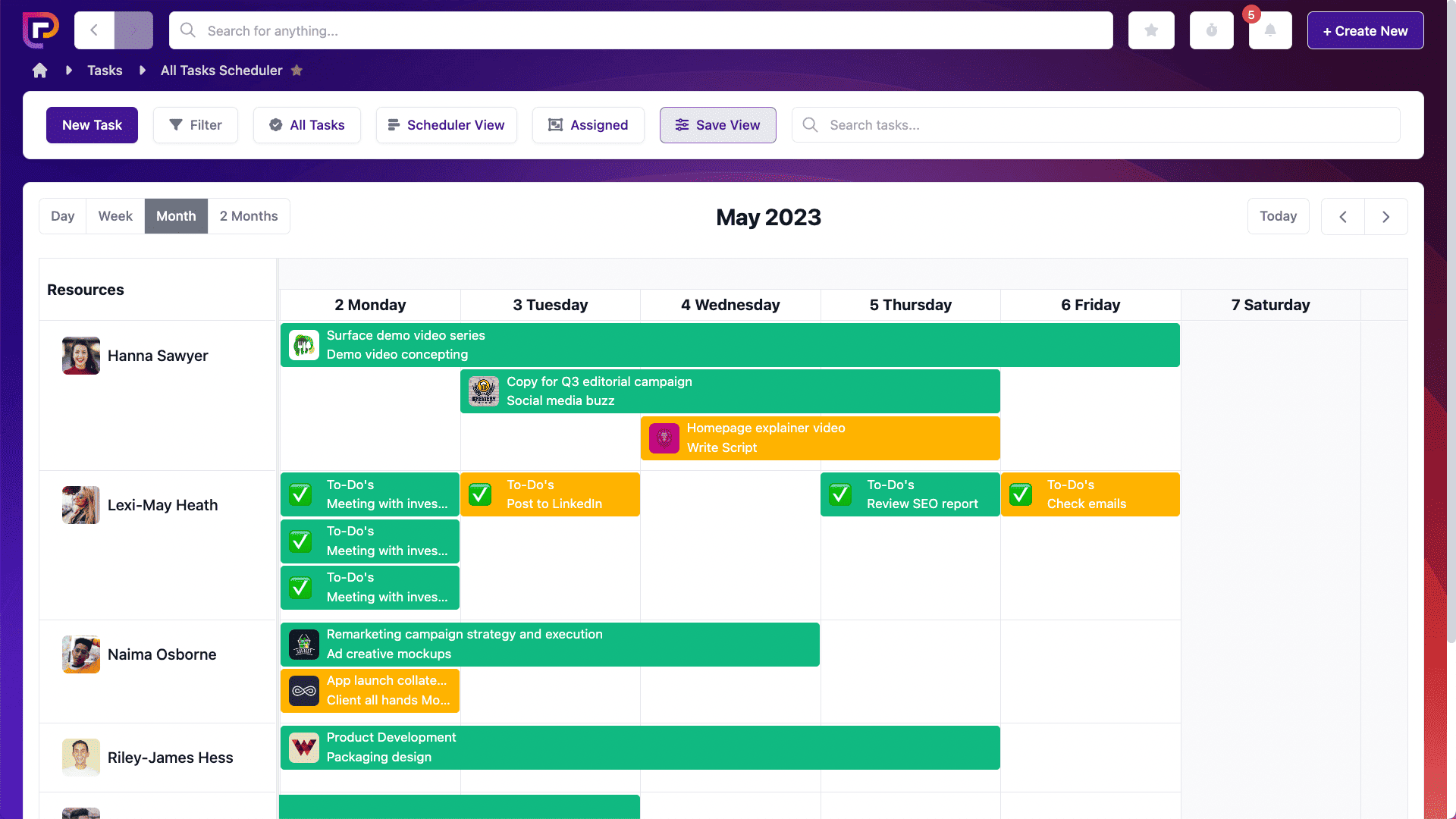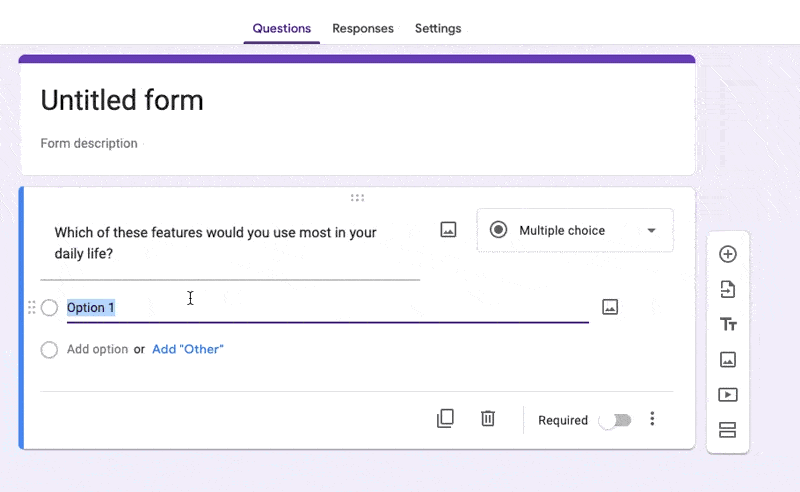Last updated on 18th April 2024
In this article we’re going to take a look at 12 reasons why projects fail, and also some solutions so that you can fix these failures if you ever run across them. Or, ideally, prevent them from ever happening to your projects in the first place!
Project failure is no joke. The consequences for a business when a project fails can be catastrophic, both emotionally when it comes to team morale and, of course, financially.
A frightening number! So, without further ado, let’s take a look at reasons why projects fail (and how you can avoid them).
What is considered a project failure?
A project is considered a failure when it does not deliver what was required either on-time or within the agreed-upon budget (or worse, both).
A project that at first appears to be a success can also be considered a failure after the fact, if it fails to meet projected ROI targets.
Of course, “failure” is a subjective term and will mean different things to different projects. But you will likely know if your own project is failing because it won’t meet the specific targets you put in place, delays will occur, money will be lost, and morale will probably suffer as a result.
12 Reasons why projects fail
There are many reasons why projects fail. And because projects and teams vary so much it can be difficult to pinpoint areas of risk for your own project. But here are 12 of the most common to give you a headstart…
1. Little to no planning
“Failing to plan is planning to fail”, as the saying goes.
Without a solid plan in place your team may not fully understand the most fundamental parts of your project, such as what their roles are, what their tasks are, and how long the project is supposed to take or how much it’s supposed to cost.
Planning also extends to managing your resources to ensure you have everything in place to meet the project requirements and people aren’t being overworked or under-utilised. The same applies to financial planning and forecasting, to ensure you don’t go over your budget.
Without a strong plan in place that covers all of these bases, a project can quickly and easily fall to pieces.
The solution?
Fortunately, the solution is simple: create a plan! Or, create several plans – one for your budget, one for resources, and a timeline.
The best way to get started is to gather all of the people who will be involved in the project in an initial kickoff meeting. This way you can hash out the details and give everyone opportunities to ask questions.
After the meeting it’s important to write everything up into a more concrete plan that you can then share with the project team.
A great way to do this is by using a project management tool. That way you can plot everything out and give all team members access to what they need in one centralised place.
2. Lack of clarity
This goes hand in hand with poor planning, but it also deserves to be its own point. After all, many projects have failed due to the very simple error of spending too much time on “the big picture” and neglecting the practical steps required to get there.
When there is a lack of clarity in a project and teams aren’t sure what their goals or objectives are, this can cause huge issues. For example, if your project is to improve your software in order to increase sales. That’s a great goal, but it’s incredibly vague.
Without clear tasks and timelines, your teams will simply be shooting in the dark.
The solution?
Large or vague goals should be broken down into smaller, actionable tasks that are then plotted across a project timeline.
This is easy to do with a tool like Project.co. With Project.co you can assign tasks to different team members, adding as much or as little detail as you want, including a due date, a checklist, relevant files, and more.

You can also see your entire teams’ tasks at a glance with a number of different views to choose from. Here’s our scheduler view which shows different team member’s tasks for the month:

It’s also worth noting that when it comes to creating actionable tasks to keep your project on track, it can help to follow the SMART criteria.
SMART is an acronym which stands for:
Measurable
Achievable
Realistic
Timely
If you can ensure that each task meets these requirements then you should have all the clarity you need to chip away at your project until it’s completed, in-time and on-budget!
3. Poor communication
This is a biggie! Poor communication can have a devastating impact on projects, resulting in missed deadlines, stressed teams, unhappy customers, and more.
Poor communication can stem from a couple of different places. It can happen when it isn’t clear who the contacts are for each stage of your project, especially if your project involves multiple teams.
It can also happen as a result of communication being siloed in different tools. For example, if some people use Slack and others use email it can be difficult to find the correct information when it’s needed.
The solution?
First of all, make it clear from the outset who your points of contact are. This is something that should be made clear during your initial kickoff meeting.
Then, if it’s feasible, these contacts should meet regularly to discuss the progress of the project. This doesn’t need to be a full-blown meeting, but a quick video call once a week to check in will really help to keep communication flowing smoothly.
Another way to improve communication throughout your project is to use one tool that everyone can access.
The Project.co discussions feature keeps all project communication in one centralised and secure place:

Messages come through in real-time and are easy to search through at a later date. You can add reactions, attach files, and do pretty much everything you can do with any other communication tool!
4. Scope creep
The scope of your project covers everything you are going to do. And, perhaps more importantly, it also outlines everything you’re not going to do.
The project scope is important because it helps you to successfully plan projects, including projected costs and timelines, and it can also help you to manage customer expectations.
Scope creep occurs when the project begins to move outside of the parameters initially laid out. It’s a very easy trap to fall into because it can begin with what appears to be very minimal changes.
That’s why it’s called “creeping”, because slowly you begin to move away from your project scope and after a while it becomes difficult to meet your deadlines and remain on budget.
The solution?
You need to define the scope of the project at your very first meeting. This should include transparent specifics such as the budget, the timeline, the points of contact, and the stakeholders.
It should also include what is outside of the scope. For example, “any changes made after Stage A of the project is completed will result in further charges and delays.”
This can seem like a difficult conversation to have in the first instance, but it’s preferable to discussing these issues mid-project when it can feel like a nasty and unexpected surprise to both clients and your employees.
5. Too many cooks
Everyone knows this old adage, and it often proves to be true.
Too many stakeholders can cause the timeline of a project to be dragged out. It can also result in numerous unnecessary changes, and will generally lead to at least some people being unhappy with the end result (if the project ever makes it to completion!)
This also falls under ‘stakeholder management’. If you have, say, 10 stakeholders to manage, then they won’t all be equally engaged with the project. It’s likely that the project is low down on the priority list for some of them, and so they could take longer to give feedback, and make changes that are not in line with the direction the project is supposed to be heading in.
The solution?
The ideal solution here is to assign one stakeholder who holds rank above everyone else at the start of the project. Someone who has the final say and can be counted on to steer the project in the right direction.
Of course, that isn’t always possible. For projects with multiple stakeholders it’s important to be clear about expectations up front. Let stakeholders know when they are expected to give feedback on the project and what kind of feedback is most constructive.
6. Lack of visibility
As projects progress, especially if you’re dealing with long projects that run on for weeks or months, team members can begin to lose visibility.
Email threads quickly become buried in inboxes, files are misplaced, and it becomes difficult to know which version is the latest. Information silos are a big problem.
The solution?
Luckily, the solution for this is simple. You need to keep everything to do with your project in one secure and easy to access place. The best way to do this is with a project management tool, like Project.co.
With Project.co, you can keep all of your project-related material from communications to files and even payments in one place.

We also have an Embeds tool that allows team members to share live and working versions of project files, so that everyone knows where the latest version is and they can leave feedback and collaborate in real time – without ever leaving the project!

Our kanban feature is also a great way to give everyone visibility into the project timeline:

This is completely customisable and it’s drag-and-drop so it’s easy to update your timeline on the fly.
7. No market research
If the project you’re working on is something you want to sell or roll out to your customers then market research should be a big part of your initial planning stage.
Many projects fail due to a lack of, or not enough, market research. Researching the market that you’re targeting is an important way to find out if there is a need, want, or demand for the product you’re making – and things you uncover while conducting this research can help to positively inform your project and give you more chance of success!
The solution?
This is easy to solve but takes time and effort. Market research can be done in a number of ways. One of the most popular ways to research your market is by conducting a survey.
If you already have the contact details of the people you want to survey, then you can use a free tool like Google Forms to mock up a quick questionnaire.
This intuitive tool makes it easy to share your survey as a link. You can also give respondents the opportunity of remaining anonymous.

If you don’t have a pool of people to contact then you can use a survey tool like SurveyMonkey to create your survey and push it out to the right demographics. You can drill down on things like age, income, gender, and more to ensure you collect market research data from people who fit your ideal target audience. However, this isn’t free and the cost will vary depending on how many respondents you want to contact and how specific your parameters are.
8. Poor management
Whether it’s an inexperienced project manager or there’s no clear leader at all, poor management can drive projects directly off a cliff.
It can be easy to think that as long as everyone knows their roles there doesn’t need to be a sole project manager, but without a strong manager who has a handle on where the project needs to go, it can be difficult to keep moving forward and maintain a unified vision.
The solution?
Assign a manager! You could also assign several managers – one for each step in the process. This is especially useful if you’re working on a long-term project that involves multiple teams.
However, if you do have several managers in place there should also be one clear overall project manager who has final say. This person should have contact with everyone involved in the project so they can understand where the project is up to, what the next steps are, and what constitutes success at each stage.
9. Lack of risk management
Speaking of management, a lack of managing risks can also cause a whole host of issues that could lead to project failure.
According to teamstage.io, risk management is the second most critical process for project success, right after stakeholder engagement.
And it makes sense. After all, no project runs perfectly so it’s important to assess potential risks and have a plan to manage them as and when they arise.
The solution?
Creating a risk management plan can put you in a good position should things go wrong. This can help you ensure that you avoid risks and complete your project in time and on budget.
A risk management plan typically covers 5 steps:
2. Risk assessment (assessing the risks and potential damage they could create)
3. Risk analysis (giving each risk a rating, from low to high)
4. Risk treatment (evaluating how each risk should be dealt with)
5. Risk mitigation (putting systems in place to avoid the identified risks)
10. Lack of updates
If you’re working on a project that spans several weeks and/or several teams then it’s important to share regular updates to ensure the project stays on track. A lack of updates goes hand in hand with poor communication, which is a big reason why projects fail.
But, without meetings, projects can easily go off-track, fall behind, or head in the wrong direction. To fix this problem it’s a case of having smarter meetings.
The solution?
Set up regular meetings with everyone involved in order to discuss the progress of the project. These could be daily stand ups that are limited to just 10 minutes, to ensure that no unnecessary time is wasted and everyone can get a quick update on the project.
If you’re working remotely then video calls can work in lieu of stand ups – you can also limit these to weekly meetings (if you feel like daily meetings are too frequent for your project).
It’s easy to set up a recurring meeting with Google Meet. All you need to do is add a meeting to your calendar as normal (selecting video conferencing, if appropriate).

Then click on the ‘Doesn’t repeat’ text below the time. As you can see, a dropdown will appear and you can select a time period for your meeting to regularly repeat.
11. Overallocated resources
When you don’t have enough people, time, or other resources to work on your project then the likelihood is that your project will fail. It’s as simple as that.
Resources can often be overlooked when it comes to planning projects. It’s easy to get bogged down in the deadline and the budget, but it’s equally important to evaluate your resources and make sure you have everything you need to complete your project successfully.
Overallocated resources tend to happen when teams are juggling multiple projects at once or if scope creep begins to alter the expectations of the project.
The solution?
The best way to avoid this is to make resource planning a big part of your initial kickoff meeting. Discuss exactly what’s needed in order to complete the project in-time and on-budget, and make sure that you have everything in place before you get started.
12. Unrealistic expectations
A big reason why a lot of projects fall short of the mark is because stakeholders had unrealistic expectations either about how much the project would cost, how long it would take, or what the outcome would be.
The solution?
There’s a simple solution to this: manage expectations from the outset with clear goals and objectives.
It can also help to make this tangible by creating a project plan.
Final Thoughts
Sadly, project failure is common. But with the tips and tricks in this article, hopefully you can manage your project successfully to avoid these common mistakes.
A great place to start is with an all-in-one project management tool like Project.co. With Project.co you can bring everything you need for your project – your tools, your team, your clients – together in one place.





